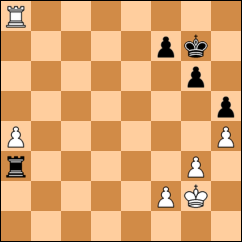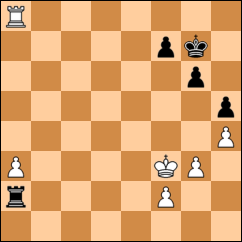Chess Videos
Chess Tools
Other
Review: The Survival Guide to Rook Endings by John Emms
Ideal audience: under 2200 ELO.
Pros: engaging writing, shares the most important information about rook endgames.
Cons: for very strong players (over 2200 ELO), something more in-depth might be needed.
"Endgames are a completely different kettle of fish."
In the endgame, the rooks come out to play. During the opening and middlegame, they usually stay home, protecting the king and avoiding the nimble knights and bishops. As a result, rooks are often the last pieces to be traded, making rook endings one of the most common types of endgames. According to GM John Emms, one in ten chess games lead to rook endings. That means that there are a lot of opportunities to save and steal half-points in these positions. To help players navigate these endgames, English Grandmater John Emms wrote The Survival Guide to Rook Endings. Emms eschews theoretically significant, but practically useless positions in favor of examples taken from real games.
For this review, I read Gambit Publishing's most recent edition of Emms' book. In the evaluation of endgames, ever more powerful chess engines are constantly finding tiny inaccuracies and changing the evaluations of complex positions. For this newest edition, Gambit has made a few "analytical corrections." Nevertheless, the bulk of the book is the same. On an unimportant note, the reissue does have a new cover, and it's one I like (unlike the recent reissue of Secrets of Pawn Endings, which has a cheesy fighting pawns cover...but the material is still amazing!). Anyways, back to things about the book that actually matter.
Emms' book, like most (all?) endgame texts, starts with the simplest endings and presents increasingly complex positions in each succeeding chapter. This means that the first chapter is fairly theoretical, as it covers the key rook and pawn vs. rook endings. But, since Emms focuses on the practical aspect of rook endings, he keeps the analysis lively and avoids drowning us in variations. That being said, the book does convey the subtleties of rook endings. Many of the examples illustrate the importance of seemingly minor features of the position. See below:
 |  |
As you may have noticed, the only difference between these positions is the placement of the a-pawns. This may seem unimportant, but the rook endgame "survivor," as Emms affectionately calls his readers, knows that everything matters. Regarding the different location of the a-pawn in the right hand diagram, Emms explains that "oddly enough, this little wrinkle helps white." The position on the left led to a draw, while the one on the right ended in a win for white. Of course the win wasn't entirely because of the a-pawn's placement, but it made a difference.
Beyond these relatively barren positions, Emms includes a great discussion of double rook endings. Here Emms distills very complex material into ten pages of engaging discussion. That might seems short for such a complicated subject, but Emms does a fantastic job. Similarly, the book as a whole is relatively short, at about 160 pages. This, however, is a virtue, as any reader who has tried to wind his or her way through Reuben Fine's Basic Chess Endings could tell you. In The Survival Guide to Rook Endings, John Emms captures the essence of rook endgames and provides it to the reader, headache free.




